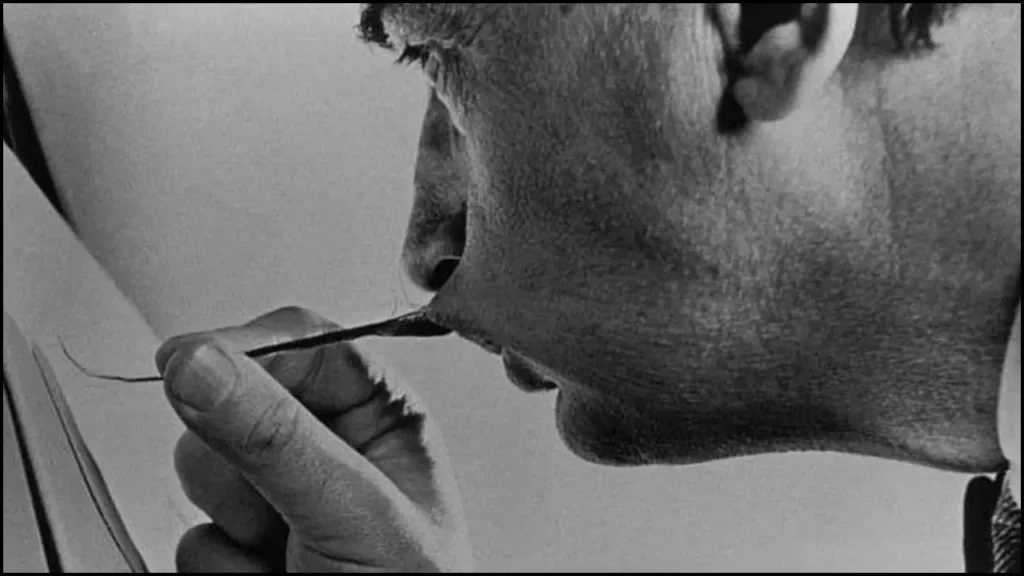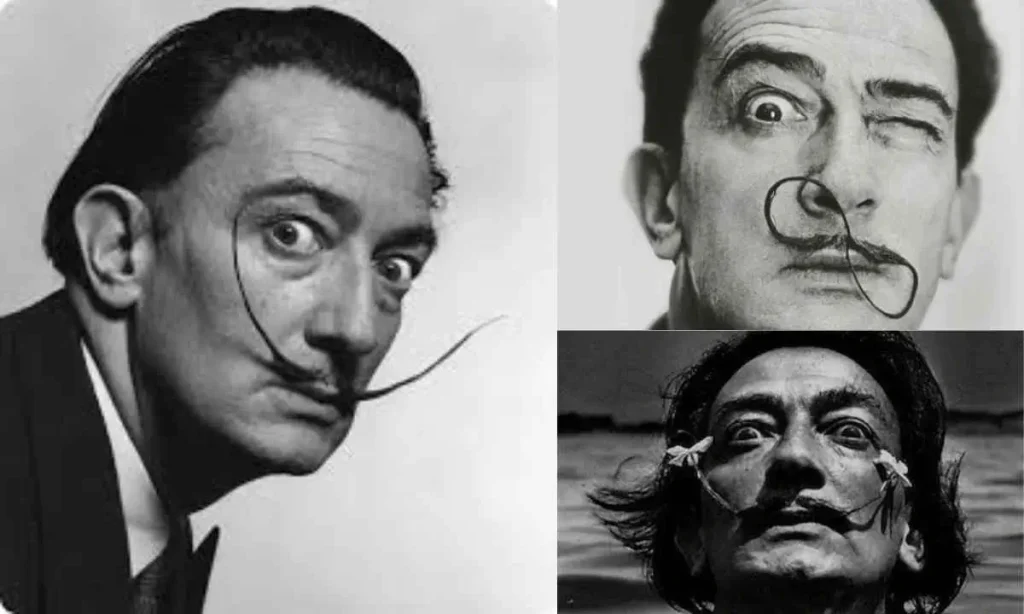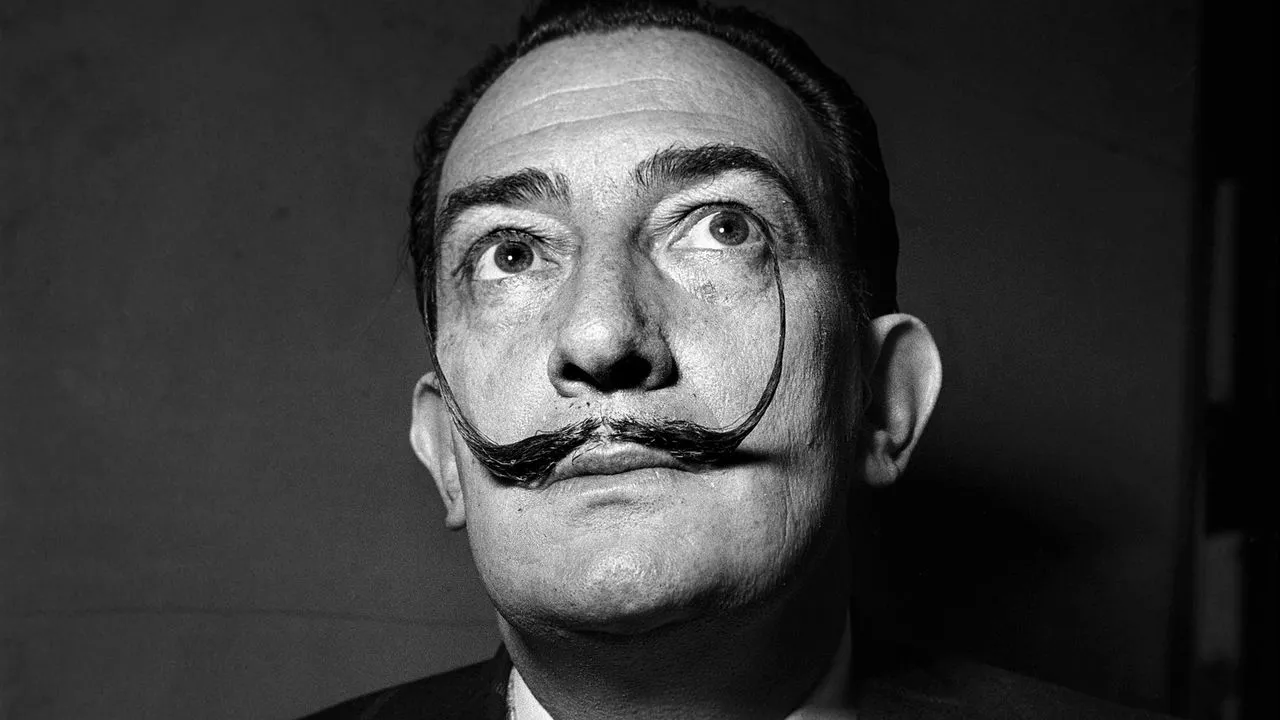This Artist Insured His Moustache For $1 Million | Salvador Dali’s Moustache Intact Even After Death!
People remember Salvador Dalí not only for his surrealist art but also for his eccentric personality and iconic mustache. This Spanish Surrealist painter and printmaker is best known for subconscious imagery. Dali’s most famous painting is ‘The Persistence of Memory (1931),’ which depicts the limp melting watches. However, despite his skilled artistry, his mustache became a lasting part of his legacy and made a bold statement. Dalí’s moustache was so essential to his image that he even insured it for $1 million!
“My mustache is… very pointed, very aggressive,” he once described it. Reportedly, the mustache was kept pointed and in place by using dates until he found a proper French wax to style it. In 2017, Dali’s remains were exhumed following a paternity case. Quite surprisingly, his famous mustache remained intact after his death and in the way he exactly liked it. Let’s have a closer look.
Who Was Salvador Dalí?
Salvador Dalí was born on May 11, 1904, in Figueres, Catalonia. He studied at the Royal Academy of Fine Arts in Madrid. There his talent became evident, although he often clashed with the academic system. Dalí’s artistic journey took off in the 1920s when he moved to Paris, where he mingled with renowned artists like Pablo Picasso, Joan Miró, and filmmaker Luis Buñuel.

Dalí’s work explored the subconscious mind, incorporating bizarre elements like melting clocks, distorted figures, and endless dreamscapes. His masterpiece The Persistence of Memory (1931), featuring soft, melting watches, became one of the most famous images in art history. People knew him not only for his paintings but also for his ventures into film, fashion, and sculpture.

The Significance of Dalí’s Moustache
Salvador Dalí’s moustache was more than facial hair; it was a meticulously crafted statement. Dalí sported a thin, sharp, and dramatically upward-curled moustache that became one of his most recognizable features. Spanish painter Diego Velázquez inspired this unique style. He also wore a prominent moustache. However, Dalí’s interpretation was far more exaggerated and surreal, perfectly matching his personality and artistic vision.
“In the beginning of this moustache, I used one very natural product. Dates, you know the fruit? In the last moment of dinner, I not clean my finger and I put a little in my moustache and it remains for all afternoon very efficiently. But now I use one real product, very good, [found] in the Place Vendôme, Hungarian wax Pinaud [a French brand that has been going since 1810]. It’s a very well-known wax already. Proust, Marcel Proust [the French novelist], uses the same.”
Salvador Dali

Dalí himself referred to his moustache as the “most serious part” of his personality, adding to its symbolic importance. His moustache reflected his eccentricity and precision, much like his art.
“Since I don’t smoke, I decided to grow a moustache – it is better for the health.”
Dalí
In 1954, Dalí published a book titled Dali’s Moustache, in collaboration with photographer Philippe Halsman. The book contained a series of images showing Dalí’s moustache in various whimsical shapes, emphasizing its versatility and surreal nature. In each photo, the moustache became an artistic prop, revealing Dalí’s playful relationship with his appearance. It was as if his facial hair had taken on a life of its own, becoming an extension of his art.
A $1 Million Insurance Policy for Salvador Dalí’s Moustache
In one of the most bizarre yet fitting anecdotes about Salvador Dalí, the artist famously insured his moustache for $1 million. He insured his moustache with Lloyd’s of London insurance company. The insurance policy even made headlines, further cementing the mustache’s place in popular culture.
The insurance policy reflected the significance he placed on his moustache as an essential part of his identity. According to reports, Dalí believed his moustache was such a crucial part of his public image that its preservation warranted financial protection.

The Moustache After Death
The legend of Dalí’s moustache did not end with his death. On July 20, 2017, the artist’s remains were exhumed as part of a paternity case. The investigation sought to determine whether a woman from Girona was Dalí’s biological daughter. When forensic experts opened the tomb in Dalí’s hometown of Figueres, they made a startling discovery: his iconic moustache was still intact, precisely in its signature upward-curled position. According to Narcís Bardalet, the forensic expert who embalmed Dalí’s body in 1989, the moustache was “exactly as he liked it.”
This posthumous preservation of his moustache became a symbol of Dalí’s enduring legacy. The fact that his moustache had survived, untouched by time, seemed to reinforce the surrealist nature of the artist’s life and work.
Stories Surrounding Salvador Dalí’s Moustache
Throughout his life, Salvador Dalí often spun fantastical tales about his moustache, adding to its mystique. One famous story involves Dalí being asked whether his moustache was functional or purely decorative. His response was typically whimsical: “Both! It’s the only moustache capable of serving as a brush, a screwdriver, and a compass!” This playful attitude toward his moustache reflected Dalí’s larger approach to life, where nothing was ever simple as it appeared.
Another well-known anecdote involves Dalí’s claim that his moustache could predict the future. According to Dalí, the angle of the moustache’s curls would shift in response to changes in the cosmic order, allowing him to foresee major events. While this claim was an exaggeration, it was in keeping with the artist’s ability to blend reality and fantasy in his everyday life.
Dalí’s moustache also became a point of pride during interviews and public appearances. In a famous 1958 interview on the American television show What’s My Line?, Dalí was introduced as “the world’s most famous moustache.” The title was fitting, as Dalí had successfully elevated his facial hair to the level of a cultural icon. For Dalí, his moustache was not just a personal trademark but a tool for perpetuating his surrealist brand.

| Image on the bottom right corner – Young Virgin Auto-Sodomized by the Horns of Her Chastity (1954)
Conclusion
Salvador Dalí’s moustache remains one of the most enduring symbols of his eccentricity and artistic genius. More than just facial hair, it was a carefully crafted statement, an inseparable part of his identity, and a surrealist extension of his art. The fact that he insured it for $1 million only underscores the significance it held in his life. Even after death, Dalí’s moustache lives on, defying time and preserving the legacy of one of the 20th century’s most extraordinary artists. In the end, Salvador Dalí’s moustache, much like the artist himself, transcended reality, becoming a symbol of the bizarre and the eternal.
Also Read:







